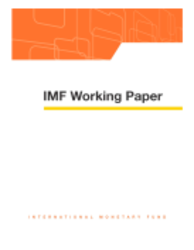
Price Setting in a Model with Production Chains : Evidence from Sectoral Data
Reconciling the high frequency of price changes at the micro level and their apparent rigidity at the aggregate level has been the subject of considerable debate in macroeconomics recently. In this paper I show that incorporating production chains in a standard New- Keynesian model replicates two stylized facts about the data. First, sectoral prices respond with significantly different speeds to aggregate shocks. Meanwhile, the responses to sectorspecific shocks are similar. Second, the standard price setting models are unable to quantitatively match the amount of monetary non-neutrality observed in the data. I argue, First, that the input-output linkages in production generate different responses to aggregate shocks across sectors. Second, calibrating this model to the US data can create five times more monetary non-neutrality in response to nominal shocks compared to an equivalent homogeneous economy with intermediate inputs. Finally, the model implies that upstream industries respond faster to aggregate shocks compared to downstream industries. I show that this prediction is supported by the data.
Publication date: March 2010
ISBN: 9781451982664
$18.00
Add to Cart by clicking price of the language and format you'd like to purchase
Available Languages and Formats
| English |
Prices in red indicate formats that are not yet available but are forthcoming.
Topics covered in this book
This title contains information about the following subjects.
Click on a subject if you would like to see other titles with the same subjects.
Inflation , Multi-sector model , Intermediate inputs , Heterogeneity , New-Keynesian Phillips curve , Production chain , inflation , relative price , monetary economics , aggregate demand , Prices , Business Fluctuations , and Cycles: General (includes Measurement and Data) , Multi-sector M
Summary
Copyright © 2010 - 2025
Powered by:
AIDC



